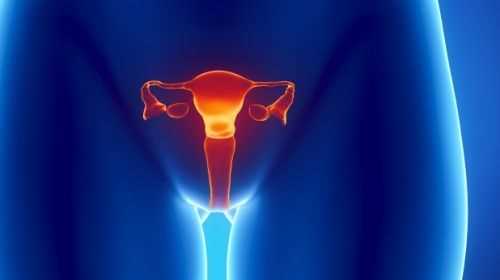Burning and pain in the vagina and pubic mound are usually caused by infections such as vaginal thrush. If the burning sensation in the vagina is accompanied by fever and fatigue, it can also be caused by a sexually transmitted disease.
Burning or pain in the vagina and genital area are common symptoms that usually occur in conjunction with other symptoms such as itching (pruritus), swelling, redness and increased discharge.
Such symptoms suggest inflammation of the vagina and vulva (pubic mound). In many cases the cause is an infection with pathogens, but other diseases can also trigger vaginal burns.
Article overview:
Common causes of vaginal burns
Burning in the vagina is a common symptom of infectious diseases affecting the female genitalia. But sexually transmitted diseases or hormonal changes, such as those that occur during menopause, are also possible triggers of a burning genital area.
Burning vagina caused by genital herpes
The most common cause of burning complaints in the vagina and vulva area is an infection with genital herpes (genital herpes). This leads to a particularly violent inflammatory reaction, which is why the pain is often very strong. Genital herpes is caused by the herpes simplex viruses 1 and 2. With the first infection, general symptoms such as fever, fatigue, headache, body aches and back pain usually occur. Other symptoms besides a burning sensation in the vagina can be genital herpes:
- small, painful, infectious vesicles arranged in groups and tiny ulcers
- itching
- swelling
- Painful urination
- Vaginal discharge
Other infectious causes of vaginal burning
Bartholinitis: Bartholinitis is also a common cause of burning sensation in the vaginal area. This is an inflammation of the duct of the Bartholin’s gland, a sex gland that opens into the vaginal vestibule between the labia minora. The inflammation is caused by vaginal or intestinal bacteria.
Streptococcal infection: Infections with A streptococci are also relatively common. Vaginal infections with these bacteria are particularly common in younger girls.
Trichomonads infection: The parasite Trichomonas vaginalis is a protozoan and causes trichomoniasis, especially in women. In addition to a burning sensation in the vagina, symptoms include severe itching, pain when urinating and sometimes a green, frothy discharge.
Fungal infection (candidiasis): The causative agent is usually Candida albicans. In addition to vaginal burning, affected women often suffer from a thick, white discharge. Itching of the vagina and vulva is also possible.
Non-infectious causes of vaginal burning sensation
Lichen planus is a non-infectious cause of vaginal burning. This is a non-contagious skin disease with red, itchy nodules on the skin (papules) and white streaks on the mucous membranes.
Another non-infectious trigger of vaginal burns is lichen sclerosus, which is associated with whitening and keratinization of the skin. It is considered a risk factor for developing vulvar cancer. In both diseases, cells of the immune system trigger inflammatory reactions in the skin, as in an autoimmune disease.
Skin injuries and inflammation of the skin caused by irritation, for example in connection with an allergy or irritants, can also cause vaginal burns.
After menopausal symptoms, infections with bacteria or fungi occur more frequently due to the lack of estrogen. But the regression of the vaginal skin due to the hormone deficiency alone can lead to vaginal dryness, burning and itching.
Gynecological examination with a burning vagina
In the case of vaginal burns, it is recommended to go to the gynecologist in order to identify the cause of the unpleasant symptom and to be able to treat it as early as possible.
First there is the anamnesis (collection of the medical history in conversation):
- When and in what context did the symptoms first arise?
- Do you have any previous illnesses?
- What are the sexual habits?
This is followed by a gynecological examination in which the external genitalia and the vagina are examined with the naked eye and with a mirror (colposcope).
In addition, the nature of the discharge from the vagina is examined, its pH value is measured and the discharge is examined under a microscope. To identify pathogens, cells or tissue samples from the vagina are examined microscopically.
It may be necessary to determine the hormone level by means of a blood test, for example if there is a suspicion that the vaginal burning sensation occurs in connection with the menopause and the associated drop in estrogen levels.
Therapy: This helps against burning sensation in the vagina
If the burning sensation in the vagina is due to an infection, therapy against the pathogen is initiated, for example a Antibiotic therapy with bacteria or the gift antiviral agents if you have a herpes infection. Local treatment with ointments or vaginal suppositories is in some cases sufficient to relieve the symptoms. But tablets can also be the drug of choice here.
Red light therapy can also provide relief for bartholinitis and hip baths with agents containing chamomile or tannins for genital herpes. If the symptoms are related to menopausal estrogen deficiency, local treatment with ointments or suppositories containing estrogen or hormone replacement therapy is possible.
In the case of autoimmune diseases (lichen sclerosus, lichen planus), ointments containing corticosteroids and ointments with calcineurin inhibitors (anti-inflammatory and immunomodulating) can improve the symptoms.
Prevent a burning sensation in the vagina
An intact vaginal flora is important to prevent vaginal burning. This can, among other things, by
- Stress,
- Medication,
- improper intimate hygiene or
- Hormone fluctuations are caused.
If the colonization of the genital area is out of balance, it is easier for pathogens to trigger an infection. That is why it makes sense, for example, to avoid stress or to counteract it through relaxation techniques. Proper intimate hygiene also contributes to a healthy vaginal flora. This includes daily cleaning of the intimate area with water, regular changes of underwear and wiping from front to back when using the toilet.
The use of a condom also protects against sexually transmitted diseases, which can lead to vaginal burns. Sitz baths with chamomile extract can help care and alleviate vaginal burns.




